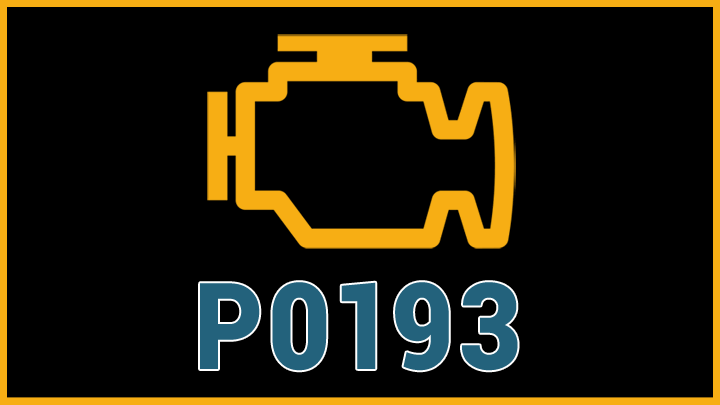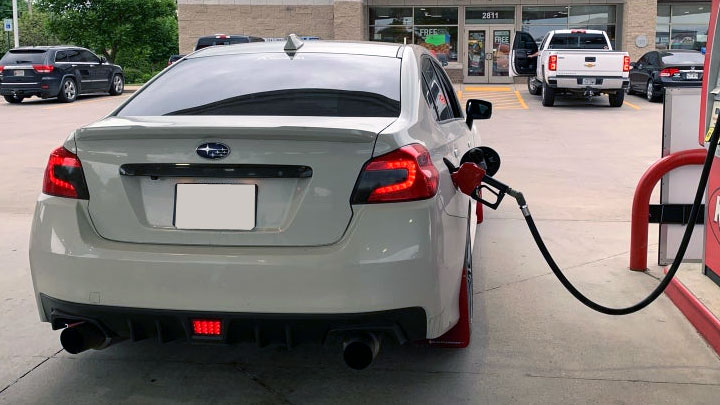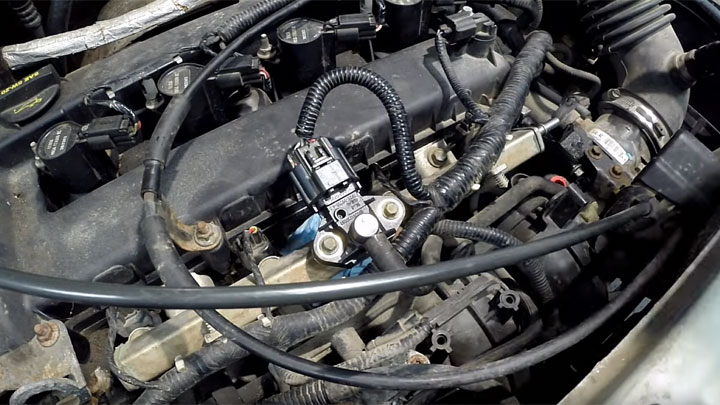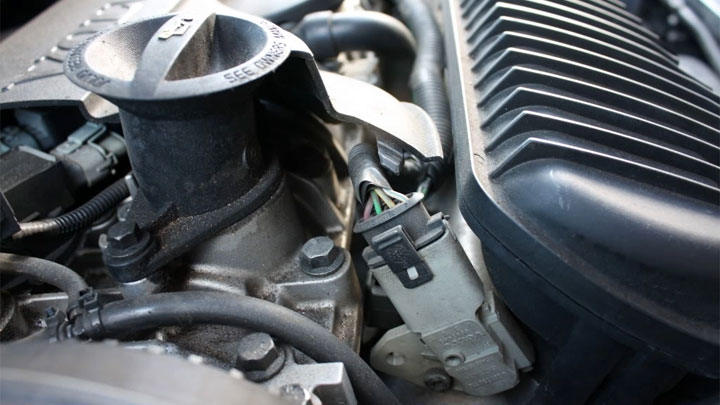P0193 Code (Symptoms, Causes, and How to Fix)
Has your vehicle recently displayed a check engine light that has been traced back to an underlying P0193 fault code? If so, you’re probably concerned about the state of your car’s performance and reliability and just how much of a headache this is going to be.
Keep reading the learn the possible causes of a P0193 code, whether or not you should continue driving, and how to go about fixing the problem.

What Does Code P0193 Mean?
Diagnostic fault code P0193 is indicative of an issue relating to the manner in which feedback from an engine’s fuel rail pressure sensor is being registered and logged, via the affected vehicle’s PCM (or ECM).
In the case of this particular fault, the vehicle’s PCM/ECM has determined that the input signal from the fuel rail pressure sensor is registering higher than it otherwise should under normal operating conditions.
The PCMs on most vehicles are designed to log diagnostic fault code P0193 in active fashion whenever the above-mentioned voltage exceeds a certain threshold (varies by manufacturer), or remains above a certain threshold for a predetermined amount of time.
Assuming this voltage continues to exceed the PCM’S pre-programmed parameters, DTC P0193 will remain active (so simply clearing the code won’t fix the issue).
The data represented by the typical fuel rail pressure sensor is used to provide a vehicle’s operating software with feedback regarding the availability of fuel for upcoming injection cycles. This is important, as proper fuel delivery is essential to achieve complete and efficient combustion.
In the case of DTC P0193, your vehicle has determined that feedback of this type has become skewed, thus making it difficult, if not impossible to monitor the affected vehicle’s fuel system as it otherwise would.
Related: DTC P0087
Symptoms of Code P0193

Diagnostic fault code P0193 oftentimes causes additional symptoms as well, some of which tend to be more pronounced than others. Recognizing these symptoms for what they are is often the first step to diagnosing the issue at hand.
The following are several of the most common signs associated with DTC P0193.
- Check engine light on
- Hesitation under load
- Intermittent stalling at stops
- Increased fuel consumption
- Crank/no-start conditions
- Failed emissions test
Causes of Code P0193

Diagnostic fault code P0193 can be due to more than one underlying issue, some of which can be somewhat difficult to pinpoint, especially to the untrained eye. Familiarizing yourself with these potential causes can prove key when attempting to address P0193-related issues.
The following are several of the most common causes of DTC P0193.
- Faulty fuel rail pressure sensor
- “Open” in fuel rail pressure circuit
- Fuel rail pressure circuit shorted to voltage
- Fuel delivery issues
- PCM failure
Is Code P0193 Serious?
Generally speaking, the diagnostic fault code P0193 is regarded as being rather serious in nature, due in large part to the potential for serious driveability-related issues that often manifest as secondary symptoms of this fault. Some of the most serious of these symptoms can leave motorists stranded, and having to wait for at tow.
It is not uncommon for a vehicle afflicted with an active P0193 to falter and stall, especially when coming to a stop at a red light or stop sign. Additionally, faults of the like have also been known to lead to starting-related difficulties. Under such circumstances, a vehicle’s engine might crank in an effortless fashion, yet fail to fire and find its normal idle.
In any event, the root cause of a vehicle’s P0193 fault code should be diagnosed and repaired as soon as possible. In the meantime, driving should be limited to a bare minimum, in order to prevent additional unnecessary hardship.
If you do not feel you are capable of resolving these issues yourself, or lack the time to do so, an appointment should be made with a trusted automotive service center at the first available opportunity.
How to Fix Code P0193

The following can be used to assist in diagnosing and repairing the root cause of a vehicle’s P0193 diagnostic fault code. As always, consult factory-specific service literature for your particular model of vehicle before attempting any repairs.
#1 – Scan For Additional Trouble Codes
Before beginning the diagnostic process, you should check for the presence of any additional diagnostic fault codes with the use of a quality OBD-II scan tool. These codes can provide additional clues when it comes to pinpointing the actual cause, potentially saving time and money.
#2 – Inspect Fuel Rail Pressure Sensor
Begin by carefully inspecting your vehicle’s fuel rail pressure sensor for signs of damage and replacing the sensor in question if any damage or abnormalities are found.
In addition, study the sensor’s associated wiring pigtail and related connectors with much the same degree of scrutiny. Any damage that becomes obvious should be repaired before proceeding.
#3 – Validate Circuit Integrity
Next, disconnect the engine’s fuel rail pressure sensor, and check for the presence of a newly active “FRP feedback low” fault.
If this new fault has been logged, you can largely deduce that the sensor’s circuit is intact and functioning as it should. This would cast significant questions upon the engine’s fuel rail pressure sensor itself.
#4 – Test FRP Sensor
The next step in the diagnostic process would involve testing the affected vehicle’s FRP sensor. The exact steps for conducting such tests can vary from one model of vehicle to the next.
For this reason, it is important to conduct such testing as suggested via factory-specific service literature for your particular model of vehicle. If the proper function of the FRP cannot be substantiated, the sensor itself should be replaced.
#5 – Test PCM
Assuming all other diagnostic steps have been completed in their entirety, and no issues have been pinpointed to this point, there is reason to believe that the problem itself might be rooted in the ability of the affected vehicle’s PCM to interpret FRP sensor feedback.
Again, tests to validate PCM functionality are highly proprietary, from one make and model of vehicle to the next. Therefore, all testing of the like should be conducted per the manufacturer’s recommendations.
- P2196 Code (Symptoms, Causes, and How to Fix) - Jun 13, 2024
- 6 Symptoms of a Transmission Pan Gasket Leak (and Replacement Cost) - Jun 10, 2024
- 4 Symptoms of a Cracked Oil Pan (and Repair Cost) - Jun 4, 2024
